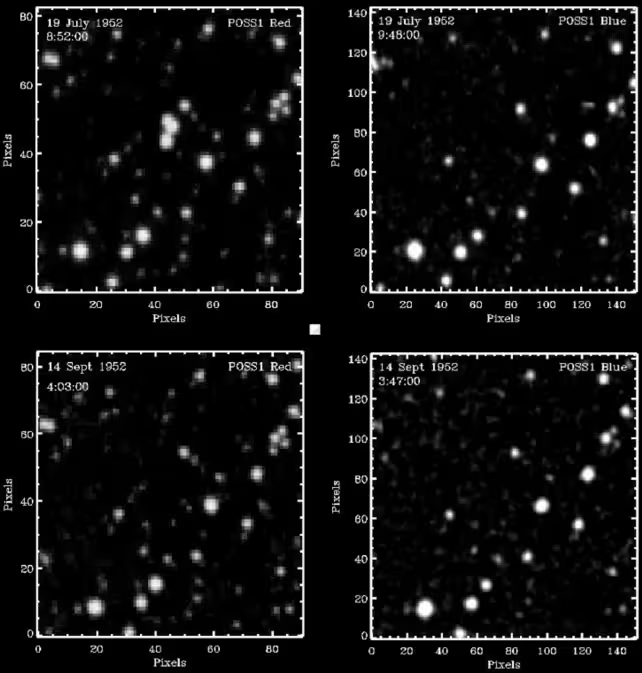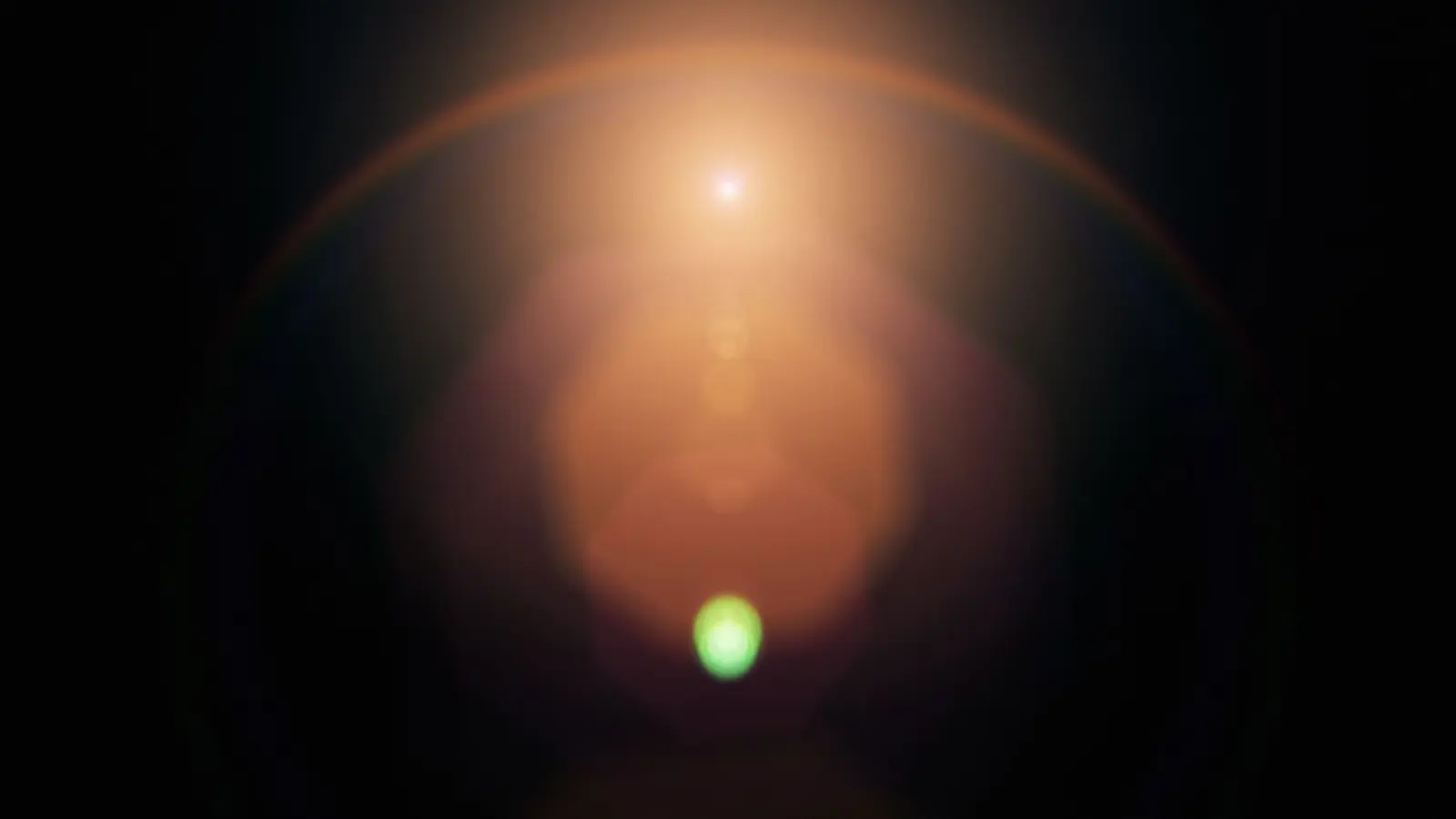6 Minutes
Archival astronomy and eyewitness reports are illuminating an odd footprint of the Atomic Age: transient lights recorded in mid-20th-century sky surveys appear to cluster around the dates of above-ground nuclear tests. A new study links photographic anomalies from the Mount Palomar Sky Survey to both explosions and reports of unidentified anomalous phenomena (UAPs), raising fresh questions about how human activity altered the night sky before the Space Age.
Unearthing vanishings in a historic sky survey
Between 1949 and 1958, the Mount Palomar Observatory photographed the northern sky in what became the first Palomar Observatory Sky Survey (POSS-I). Those photographic plates—glass negatives used before modern electronic detectors—captured thousands of stars, galaxies and, puzzlingly, a number of fleeting points of light that appeared in one exposure but were gone in later surveys. Astronomers call these short-lived events "transients." Historically, many were written off as plate defects or processing errors.
Researchers working with long-term sky records through the VASCO project (Vanishing and Appearing Sources during a Century of Observations) have re-examined these transients. VASCO founder Beatriz Villarroel and collaborators showed in 2021 that not all POSS-I transients fit expected patterns of emulsion defects—some behaved like genuine, localized flashes in the sky.

A triple transient (top left) that appeared in the POSS-I data but was absent from subsequent surveys. (Bruehl & Villerroel, Sci. Rep., 2025)
Cross-referencing transients with Cold War testing and UAP reports
In the new analysis, anesthesiologist Stephen Bruehl (Vanderbilt University) and theoretical physicist Beatriz Villarroel (Stockholm University) compiled a dataset spanning 2,718 days of POSS-I observations. They cross-referenced the days when transients were recorded against the historical dates of above-ground nuclear tests conducted by the United States, the Soviet Union and the United Kingdom. At the same time they compared those days with UAP sighting reports from the UFOCAT database.
The statistical pattern is striking. Transients were 45 percent more likely to appear within a narrow nuclear-test window—defined as one day before to one day after an above-ground test—than outside of it. The strongest signal occurred the day after a test, when the probability of seeing a transient rose by 68 percent. When the team compared transient days to UAP reports, the association was weaker but noticeable: each additional UAP report on a single day increased the odds of a concurrent transient by roughly 8.5 percent.
Crucially, UAP reports themselves rose slightly during nuclear-testing windows, a relationship not previously documented in peer-reviewed literature. As the authors note, these correlations do not establish causation but do strengthen the case that many transients and some UAP reports reflect real, contemporaneous phenomena rather than random plate flaws or hoaxes.
Why plate defects and fallout seem unlikely
Part of the study's power lies in what it rules out. If most transients were simply emulsion defects, they would not cluster around specific external events like tests. Similarly, because the strongest effect appears the day after a detonation, it is hard to attribute the signal to lingering fallout—radioactive particles dispersing in the atmosphere—since fallout patterns and observational timing would likely differ.
The authors also argue that observer bias is an unlikely explanation. Scientists analyzing the POSS-I plates decades later had no contemporary knowledge of transients, and eyewitnesses reporting UAPs were not generally aware of nuclear test schedules. Taken together, these lines of evidence suggest the transients represent an authentic anomaly in the historical astronomical record.
What the correlations might mean
Several non-exclusive explanations remain on the table. High-altitude ionization, temporary plasma effects produced by detonations, electrically charged aerosol layers, or interactions between nuclear explosions and the upper atmosphere could conceivably generate luminous or transient optical phenomena visible from large distances. Human-made rocket launches, experimental aircraft, and early satellite activity may also have contributed to sporadic lights in the sky during this era.
The researchers emphasize caution. "Our findings provide additional empirical support for the validity of the UAP phenomenon and its potential connection to nuclear weapons activity, contributing data beyond eyewitness reports," they write, noting that further investigation is needed to identify physical mechanisms and rule out residual instrumental causes.
Expert Insight
"This paper demonstrates the value of re-examining historical data with modern techniques," says Dr. Lara Mendes, an astrophysicist who studies transient phenomena. "The statistical connection to nuclear testing is compelling, but understanding the physics will require targeted modeling and, ideally, laboratory or atmospheric experiments to reproduce plausible light-producing processes."
Future work can leverage continuous CCD sky surveys, satellite-based sensors, and spectroscopic instruments that provide time-resolved color and energy information—data that glass plates could not capture. Modern instruments would let scientists distinguish between optical flashes, ionization signatures, and camera artifacts with far greater confidence.
The study, published in Scientific Reports, opens a new chapter in historical astro-forensics: the record of human technological activity inscribed on the sky. Whether those marks will reveal a clear physical mechanism or a mosaic of human, atmospheric, and instrumental effects remains an open and intriguing question.
Source: sciencealert
Comments
skyspin
This gives me chills! The idea we literally left transient lights in the sky with bombs is creepy and fascinating, gotta dig into the data more
astroset
Wait so nuclear tests might've left visible flashes? Sounds wild, but correlation isnt causation. Need lab experiments, models and better sensors. Also who checked satellite logs, if that's real then…


Leave a Comment